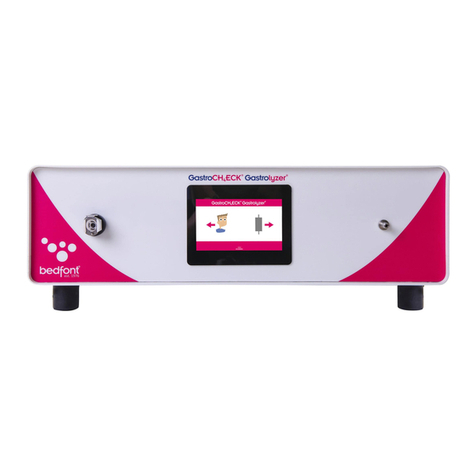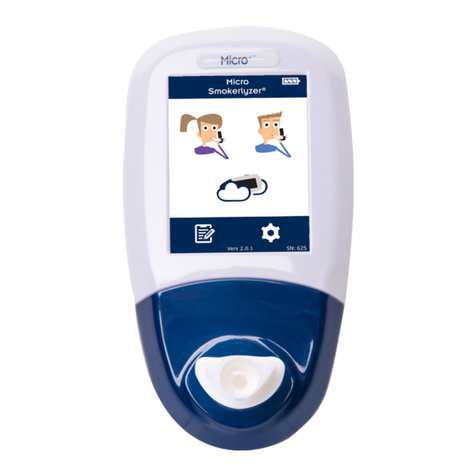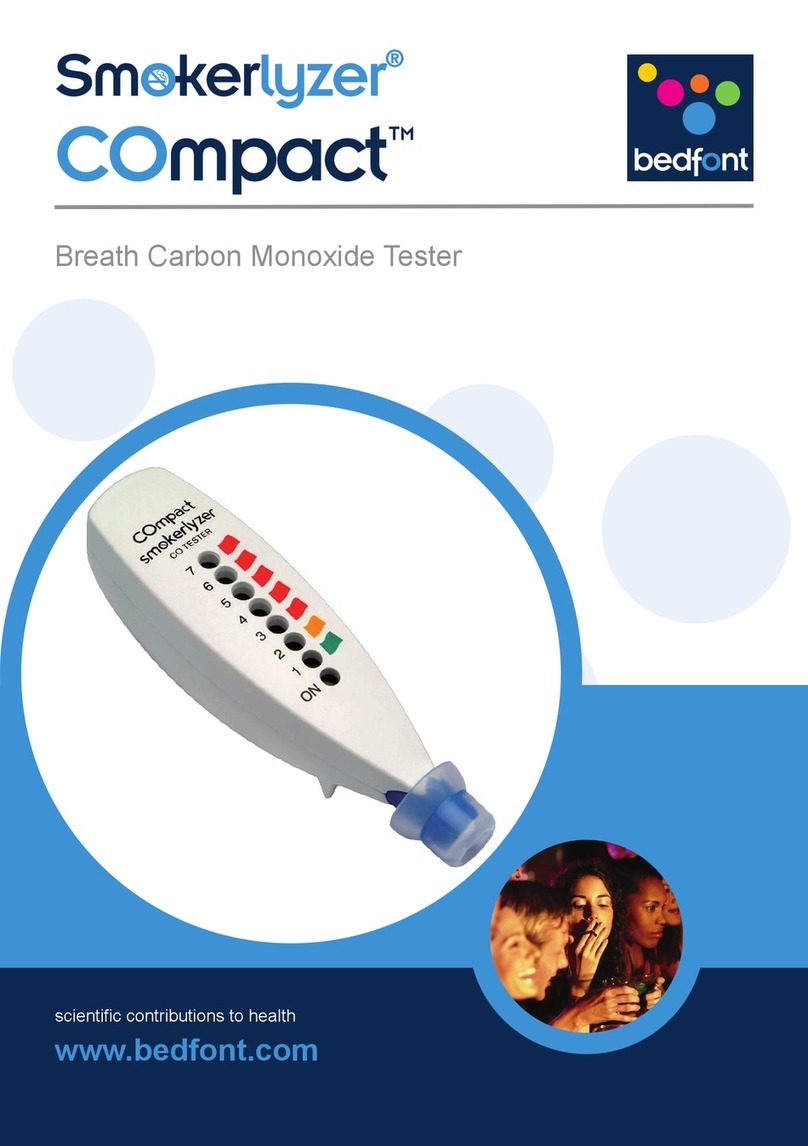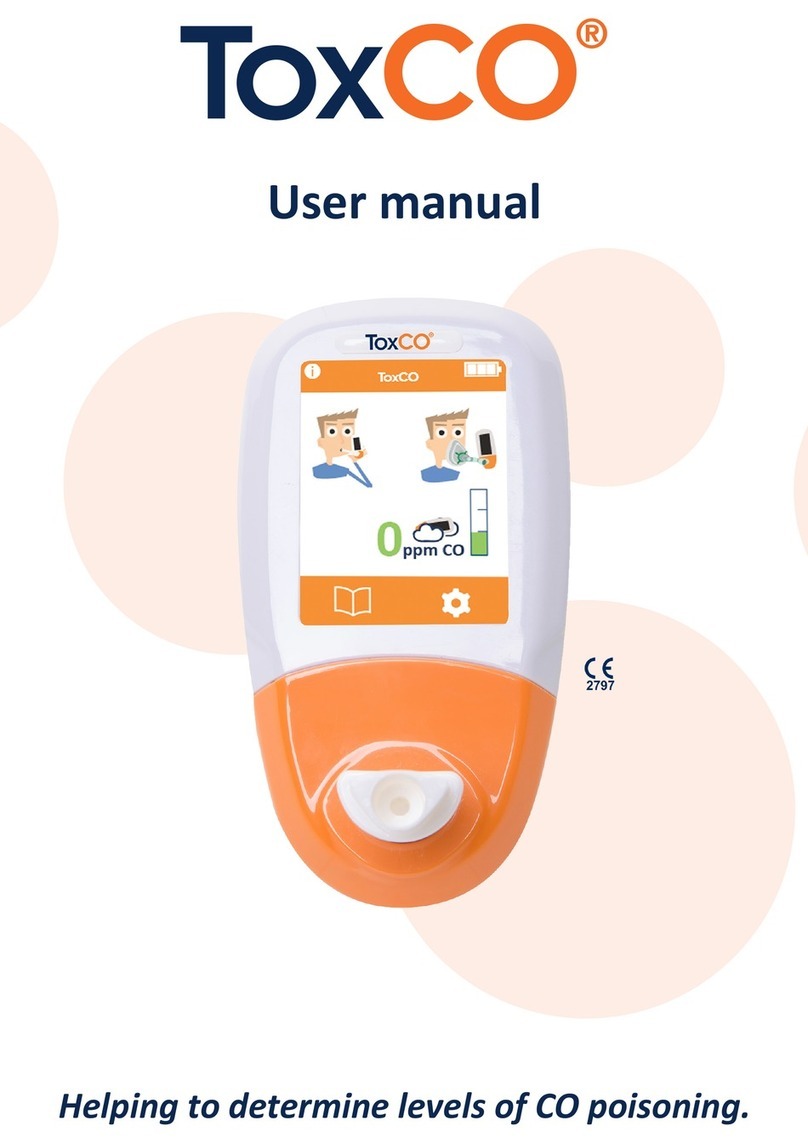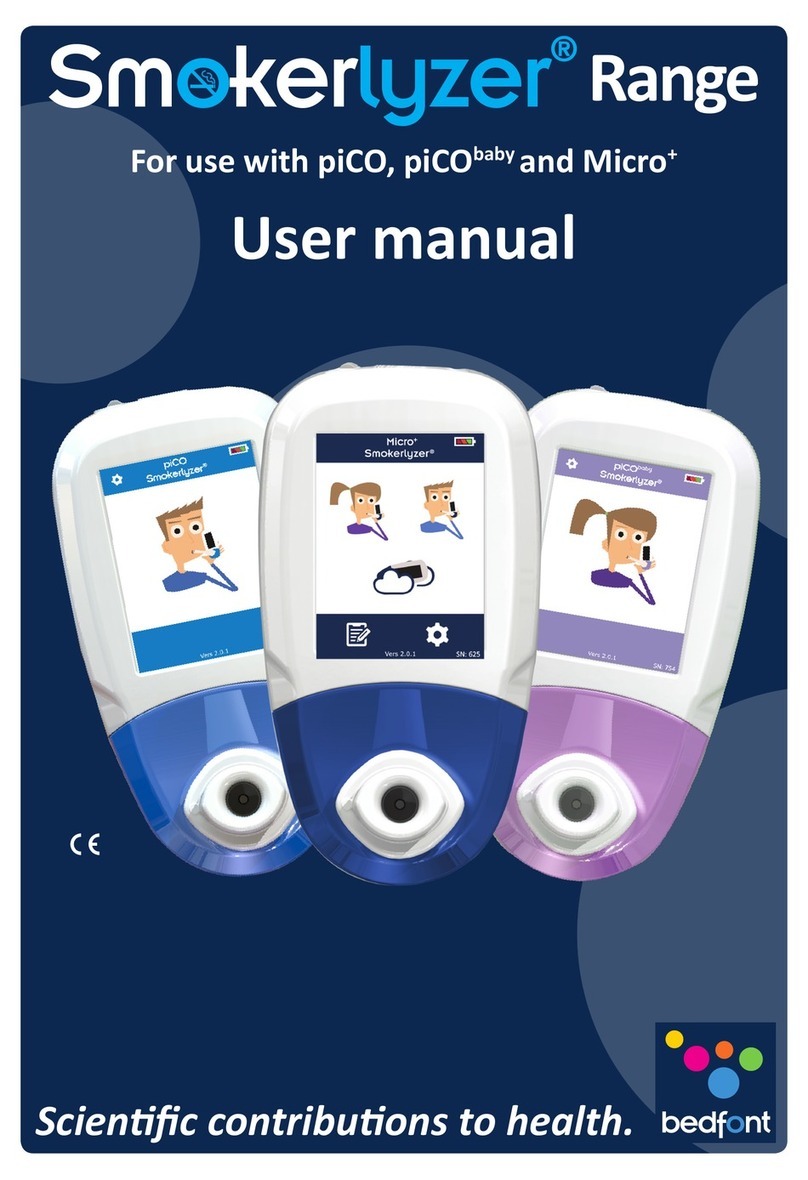• Ensure that the NObreathFloTM and mouthpiece are
ed correctly to the front of the monitor.
• The NObreath® device should be held upright, this helps
the paent to maintain the correct ow rate by keeping
the ball elevated in the centre of the marked area on
the NObreathFloTM.
• Two measurements, within 10% dierence of each
other, must be achieved before making a nal result.
• Paents should wait 3-5 minutes between tests in order
to allow NO levels to stabilise.
• Paents should not hold their breath before exhalaon,
they should take a deep breath in and then a long slow
exhalaon at 50ml/s as indicated on the NObreathFloTM.
Bedfont® Scientic Ltd, Station Road, Harrietsham, Maidstone, Kent ME171JA
Issue 8- November 2017, Part No: LAB020 © Bedfont® Scientic Limited 2017.
Bedfont® Scientic Limited reserve the right to change or update this literature without prior notice.
Registered in: England and Wales. Registered No: 1289798
• Avoid alcohol consumpon for 24 hours prior to test
• No smoking for 12 hours before the test
• No food or drink to be consumed for 1 hour before the test
• No strenuous exercise to be undertaken for 1 hour before the test
Paent preparaon
When taking the test:
Factors directly
relang to asthma
Factors NOT directly
relang to asthma
Factors increasing
eNO
• Exacerbaons
• Low ICS compliance
• Poor inhaler technique
• Low asthma control2
• Poor adherence2
• Bronchial Hyper-Responsiveness
(BHR)
• Height, male gender
• Allergen exposure
• Atopy
• Diet2
• Holding breath before a test
• Upper and lower respiratory tract
infecons
• Exercise2/hypervenlaon
• Cysc brosis2
Factors decreasing
eNO
• Increased ICS treatment2
• Leukotriene receptor antagonists
(LTRA) medicaon may have an
eect on lowering eNO1
• Alchohol decreases eNO in
asthmacs but not in normal
individuals1
• Good adherence
• Spirometry
• Smoke exposure1
• Pulmonary hypertension
• Primary ciliry dyskinesia1
1Exhaled nitric oxide and the management of childhood
asthma – yet another promising biomarker “has been”
or a misunderstood gem Turner: Paed Respir Rev 2015;
16:88.
2Yates, D. H., Kharitonov, S. A.,Robbins, R. A., Thomas, P.
S. and Barnes, P. J. (1996) ‘The eect of alcohol ingeson
on exhaled nitric oxide’, European Respiratory Journal,
9(6), pp. 1130–1133.
